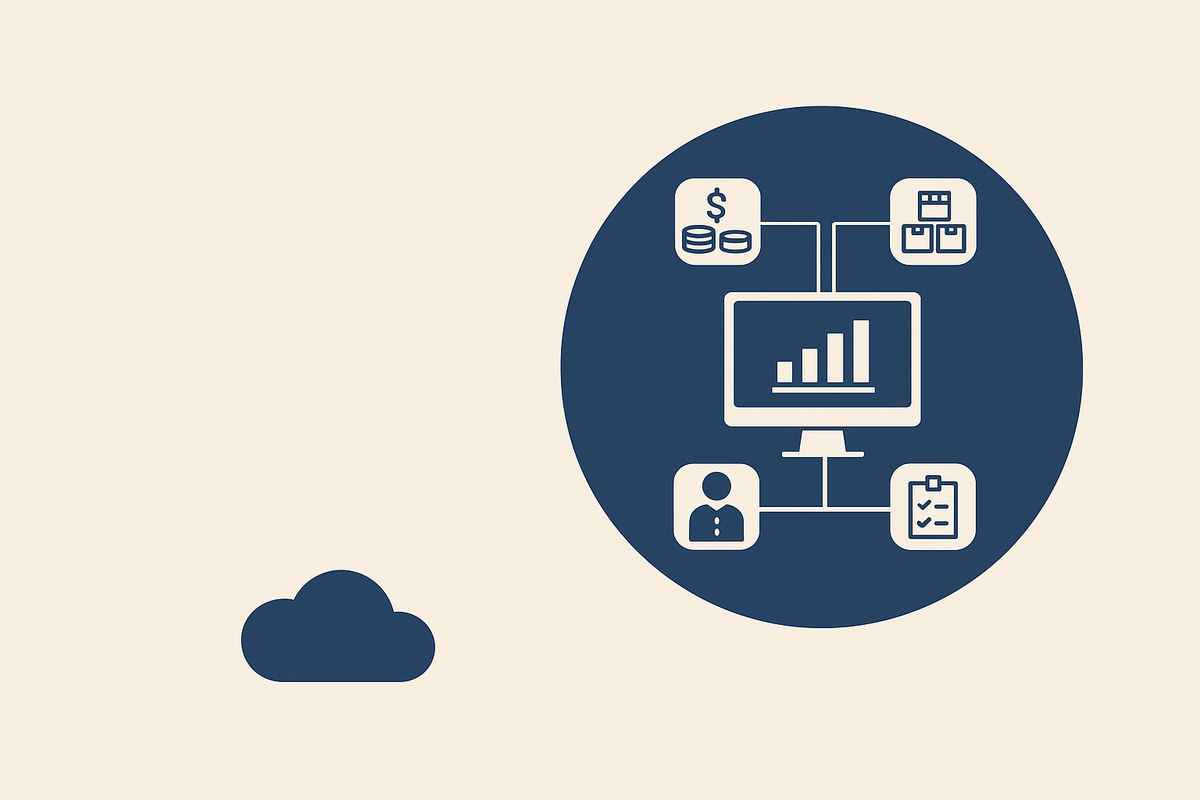What is an ERP, Really? (And Why It’s Not Just Accounting Software)

When people hear the word ERP, they often think of complicated IT projects, long implementations, and expensive software. Some even believe ERP is “just accounting software.” The truth is much broader: ERP (Enterprise Resource Planning) is the backbone of how modern companies run their business.
If you’re a manager, CFO, or project sponsor, this post will give you a clear explanation — in plain English — of what ERP is, what it does, and why it matters.
Why do companies move away from Excel?
Spreadsheets work well in the early days. But as a company grows, problems appear:
- Errors become costly.
- Different versions of the truth circulate.
- Real-time visibility is impossible.
At this point, companies start looking for something more robust — and that’s where ERP comes in.
What is an ERP?
ERP = one system that connects finance, supply chain, projects, HR, and reporting.
Instead of every department using its own tool, ERP creates a shared backbone. This means:
- Finance sees what’s happening in operations.
- Operations can forecast based on sales.
- Management gets one source of truth for decision-making.
But ERP is not only about data. It’s about business integration: aligning different functions and standardising processes so that the entire company can work toward the same objectives.
What an ERP actually does (with examples)
- Finance: automate invoices, speed up month-end close, consolidate multiple entities.
- Supply Chain: manage inventory, purchase orders, and deliveries.
- Projects: budget, track costs, and forecast more accurately.
- HR & Operations: manage approvals, timesheets, and people.
Think of ERP as the operating system of a company.
Common misconceptions about ERP
- ❌ “It’s just accounting software.” → No, it runs operations as well.
- ❌ “It’s only an IT project.” → It’s primarily a business transformation project.
- ❌ “It’s only for big companies.” → Even mid-sized firms rely on ERP today.
Why companies invest millions in ERP
- Business integration → one backbone that ties departments together.
- Standardisation → common processes that support company-wide objectives.
- Single source of truth → less errors, faster decisions.
- Efficiency → automation reduces manual work.
- Compliance → easier audits, internal controls, and statutory reporting.
- Scalability → the system grows as the business grows.
Where Dynamics 365 fits in
Microsoft’s ERP is called Dynamics 365 Finance & Supply Chain Management.
- It connects natively with Office 365, Power BI, and Microsoft Teams.
- It’s available both in the cloud (most common today) and on-premise for organizations with specific needs.
- Cloud-based deployments reduce IT costs, while on-premise versions give companies full control over infrastructure.
Takeaway
ERP isn’t about technology. It’s about integrating the business, standardising processes, and giving your company one backbone so it can run smoother, make better decisions, and scale without chaos.
If you’re new to ERP, remember this: ERP = one shared system for your whole business, not just accounting.



